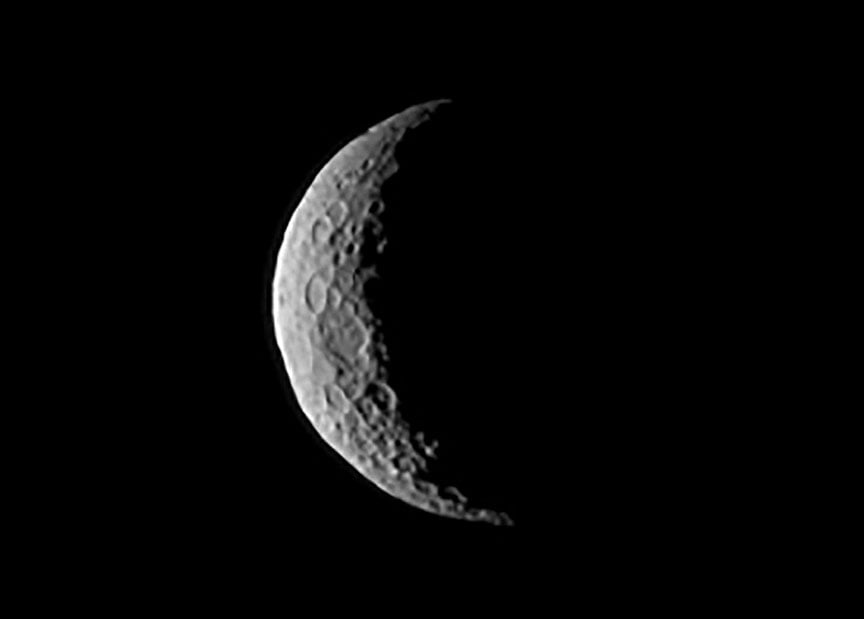Dawn's approach and trajectory as it begins its orbital "dance" with Ceres. As you watch, note the timeline at upper right.
Dawn made it! After a 14-month tour of the asteroid Vesta and 2 1/2 years en route to Ceres, the spacecraft felt the gentle tug of Ceres gravity and slipped into orbit around the dwarf planet at 6:39 a.m. (CST) Friday morning.
"We feel exhilarated," said lead researcher Chris Russell at the University of California, Los Angeles, after Dawn radioed back the good news.
Not only is this humankind's first probe to orbit a dwarf planet, Dawn is the only spacecraft to fly missions to two different planetary bodies. Dawn's initial orbit places it 38,000 miles (61,000 km) from Ceres with a view of the opposite side of Ceres from the Sun. That's why we'll be seeing photos of the dwarf planet as a crescent for the time being. If you watch the video, you'll notice that Dawn won't see Ceres' fully sunlit hemisphere until early-mid April.
[caption id="attachment_119286" align="aligncenter" width="580"]
Dawn's spiral descent from survey orbit to the high altitude mapping orbit. The trajectory progresses from blue to red over the course of the six weeks. The red dashed segments are where the spacecraft is not thrusting with its ion propulsion system. Credit: NASA/JPL[/caption]
The spacecraft will spend the next month gradually spiraling down to Ceres to reach its "survey orbit" of 2,730 miles in April. From there it will train its science camera and
visible and infrared mapping spectrometer
to gather pictures and data. The leisurely pace of the orbit will allow Dawn to spend more than 37 hours examining Ceres' dayside per revolution. NASA will continue to lower the spacecraft throughout the year until it reaches its minimum altitude of 235 miles.
[caption id="attachment_119287" align="aligncenter" width="580"]
As Dawn maneuvers into orbit, its trajectory takes it to the opposite side of Ceres from the sun, providing these crescent views. These additional pictures were taken on March 1 at a distance of 30,000 miles (49,000 km). Credit: NASA/JPL-Caltech/UCLA/MPS/DLR/IDA[/caption]
"Since its discovery in 1801, Ceres was known as a planet, then an asteroid and later a dwarf planet," said Marc Rayman, Dawn chief engineer and mission director at JPL. "Now, after a journey of 3.1 billion miles (4.9 billion kilometers) and 7.5 years, Dawn calls Ceres, home."
More about Dawn's incredible accomplishment can be found in the excellent
Dawn Journal
, written by Dawn chief engineer and mission director Marc Rayman.
 Universe Today
Universe Today
